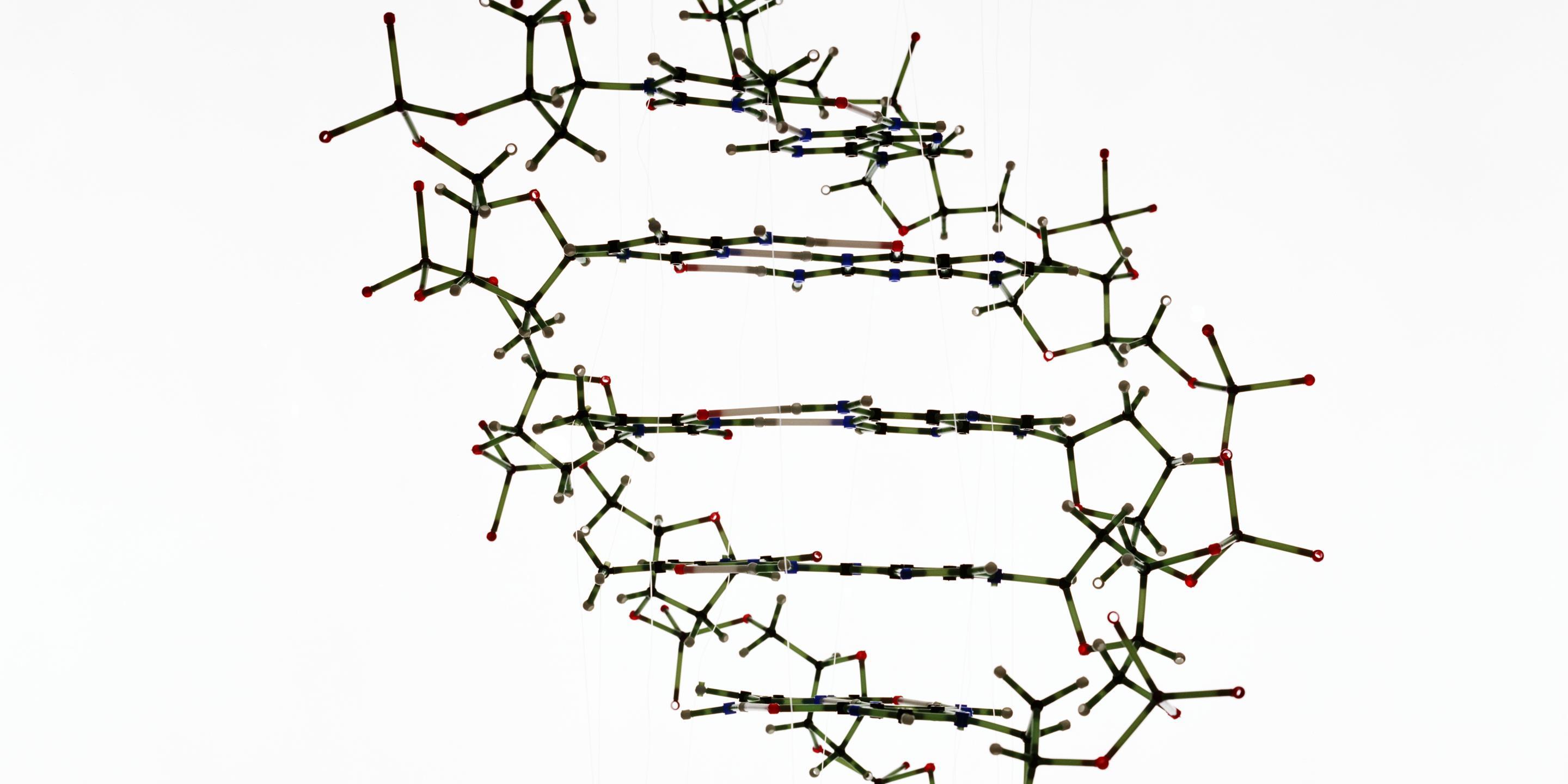Could genetic testing change the way you eat and exercise? An endurance athlete finds out firsthand.
The good news is that I have a resting heart rate of 45, can run a 5k in 20 minutes, ride a mountain bike up steep trails all day long, and do 16 straight full-hang pull-ups. The bad news is that I have a 50 percent risk of getting arthritis in my knees, an 85 percent risk of getting it in my wrist, and a 53 percent risk of having a heart attack due to coronary heart disease. And to rub it in, I have a 72 percent chance of going bald.
After you think you’ve been driving a sports car all these years, it’s a bit sobering to go under the hood and find out that your frame is loaded with poor-quality welds and your motor is held in place with duct tape and rusty pipes. But your genes don’t lie; you are what you are. And seeing what you’re made of through genetic testing, as I did recently with an exclusive new Equinox service, is actually a very good thing, no matter the results. It allows you to develop a plan to minimize those risks — maybe even the baldness.
Empowering yourself to control your destiny is the idea behind the new Equifit Genetic Report, a first-of-its-kind assessment that analyzes a sample of your DNA, finds out your congenital strengths and weaknesses and addresses them with tailored workout and diet plans.
"Everything is actionable," says Matthew Berenc, the personal training manager at the Century City club in Los Angeles who handles the program, "The future of health and fitness is not just being reactionary, but taking pro-active steps."
Since hair, blood and saliva all contain our DNA, the first step involves spending 10 minutes spitting into a test tube. I handed my specimen to Berenc, who forwarded it on to Existence Genetics (EG), an LA-based company that developed what it calls a Nexus DNA Gene Chip, which purportedly can detect a large number of disease-causing variations in the human genome. EG sends back a coded, identity-shielded report that analyzes your genetic makeup in 6 areas: athletic performance (including power-to-endurance bias and susceptibility to exercise-induced fatigue and muscle damage), osteoporosis (for women only), osteoarthritis (for knee, hip, and wrist), heart attack, preventable sudden death and hair loss. Risks are labeled low, moderate, high and severe, based on comparisons to the general population, and various lifestyle changes are recommended.
Here, my results and suggestions for improvement:
Osteoarthritis: My test showed "moderate" risk to knees and hips and "very high" risk to wrists. In real life, X-rays and sports injuries of minor cartilage have shown wear in my leg joints, with no damage to wrists. To reduce future risk, Equifit recommends that I give up high-impact activities, such as replacing running with the elliptical machine and banning boxing and overhead weight lifting, which is traumatic to wrists.
Heart Attack and Coronary Disease: I was shocked by the "High Risk" rating I received in this category. Previous tests showed that I have little to no plaque build-up in my blood vessels, probably due to obsessive lifelong aerobic activity and daily fruit, vegetable, and fish intake, all high on the report recommendation list.
Athletic Predisposition: Apparently, the saving grace to my genetic tendency for arthritic joints and clogged arteries is a predisposition to being an endurance maniac, which in fact I’ve been as an adult — endlessly cycling, running, swimming, rowing, skating, you name it. The test found that my genes set me up for extremely low levels of "exercise-induced fatigue" and "exercise-induced muscle damage" compared to the general population. In others words, I don’t get tired or sore as quickly as most others do in long-distance activities.
Balding: My decades of daily aerobics mania — cycling, running, swimming, rowing, skating, you name it — may have also saved me from my "high risk" of balding, which actually began in my early 20's but has progressed invisibly for several decades until recently. "There’s no cure, but you can slow it down," says Berenc. In addition to over-the-counter prescriptions, aerobics helps slow hair loss because it lowers testosterone, a follicle killer. Intense strength work, by contrast, raises T, so baldies should reduce the lifting and follow it with aerobics.
The bottom line, Berenc told me, is that I don’t need to be paranoid, and I don’t need much help from him, like a fatter, less active foodie twin of me might. By following the aerobic blueprint layed out for me by my good genes, I may be minimizing the potential nasty effects of my bad ones.Genetic testing at select Equinox locations is $500. Subsequent personal training sessions are not included.
